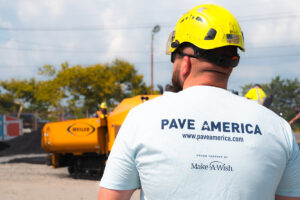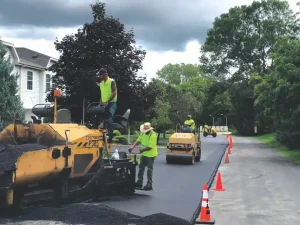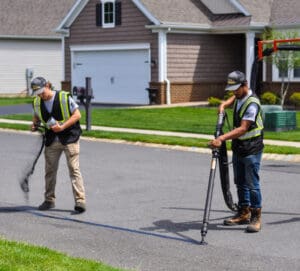When you mix native soils, gravel, measured amounts of Portland cement, and a mixture of aggregate material with water, you get a cement-treated aggregate (CTA). CTA also known as a cement-treated base is often used as a base for concrete and/or asphalt surfaces. It’s mostly employed on parking lots, highways, streets, airport runways, highways, local roads, and so forth CTA after being compacted and cured hardens to form a lasting paving substance.
Aggregate Components of Cement-Treated Base
The types of aggregates that can be used in the composition of cement-treated base are;
Gravel/Ballast Aggregates
This type of aggregate comes from sifted quarried rock and crushed natural stone. They are cheaper than granite aggregates since they are not as strong. Gravel is commonly used in road construction. The two types include secondary aggregates like concrete, brick, and asphalt. The other gravel aggregate type is sand.
Limestone Aggregates
It’s created through crushing sedimentary rock and is most commonly used to reinforce concrete and in road construction.
Granite Aggregates
It comes in different shades like pink, grey, and red and can be used as a decorative feature. Granite is composed of quartz, feldspar, and mica crystals that dictate the stone’s color.
Control Factors for Quality Cement Treated Aggregate
In CTA construction, the objective is to get an even more thorough mixture of the properties to create consistent and maximum compaction. To achieve this, there are a few fundamental factors that come into play;
- Proper cement components
- Enough water
- Mixing thoroughly
- Sufficient compaction
- Right curing
Benefits of Cement Treated Aggregate
Quick
Thanks to modern technology, CTA application has become quick and efficient. One does not have to mix the aggregates from one spot and transfer it to the construction zone. Local soil, silt/sand, and gravel can be mixed and processed right at the site.
Cost-effective
Cement-treated aggregate is more consistent, stronger, and stiffer. This characteristic reduces the likelihood of cracking as it eases the strain on the treated surfaces. This, in turn, prolongs the life of the pavement and saves you treatment costs as well.
Durability
As stated earlier, the components in a cement-treated aggregate make it stronger, stiffer, and more rigid than other treat bases, making it impervious. Surfaces with CTA are, therefore, likely to be stronger and more durable. Cement-treated aggregate is moisture, rain, freeze, and frost resistant and it gets stronger with time, even under heavy pressure from traffic loads.
Efficient
While the application of cement-treated aggregate is not as thick as that of other treatment bases, the result is often the same and still offers similar stability and support in distributing loads over a vast coverage. Since CTA incorporates local material, hauling and transportation costs are significantly reduced.
Also, since the cement-treated base is water resistant, construction does not have to stop on the account of rain.
CTA application requires professionals for it to produce the desired results. Here at pro-pave incorporated, we supply you with a team of experts that get the job done swiftly and efficiently at affordable prices. For more information, visit our website or contact us here.



